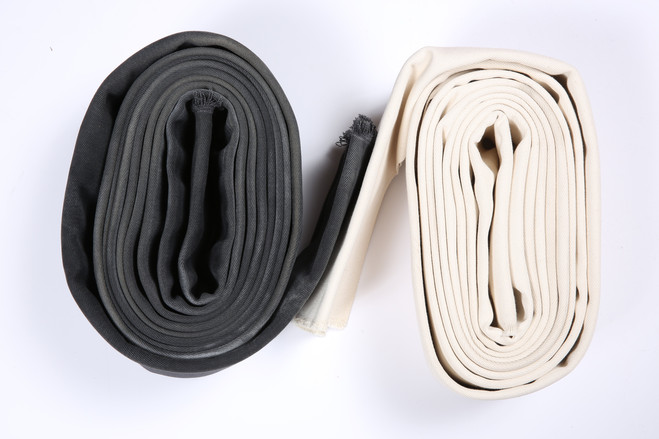WHAT'S IN YOUR BAG?
By HILARY POTKEWITZ
Some sports have elaborate uniforms. Sumo wrestling isn't one of them. Athletes compete wearing a sumo belt, called a mawashi, and little else. It makes packing easy, says sumo champion Byambajav Ulambayar, known as Byamba (rhymes with mamba).
The 31-year-old is constantly traveling from his Los Angeles home for international tournaments, sumo exhibitions and other professional appearances.
He always packs two mawashis, white for practice and black for competition. Unfolded, the cotton belt is more than 20 feet long. “When people first see it, they think it’s a fire hose,” jokes Mr. Ulambayar (pronounced “oo-LAHM-buy-yar”). The other official piece of sumo attire is a loosefitting robe, called a yukata. Wrestlers typically wear cotton robes for practice and have colorful silk yukatas for formal occasions. Mr. Ulambayar has more than a dozen robes but usually travels with just three.
It takes a lot of fabric to cover his 6-foot-1, 370-pound frame, so between the belts and the robes, his bag is almost full. He brings athletic tape for the occasional injury to his fingers.
He usually flies business class, but if he has to fly economy, he’ll book two adjacent seats to be comfortable.
Originally from Mongolia, Mr. Ulambayar says he learned to pack light at a young age. Though he a grew up in the capital, Ulaanbaatar, where his mother was a high-school teacher and his father a truck driver, young Byamba and his sisters would spend their summers in the countryside with their grandparents, living in a ger (a Mongolian yurt) with relatives for weeks at a time.
They would go to cultural festivals that involved days of competition in the traditional sports of Mongolian wrestling, horseback riding and archery. His grandfather was a regional wrestling champion.
“I was always a big kid, and my father made me do Mongolian wrestling,” he recalls. By age 15, he was a national junior champion in wrestling and judo, he says.
In the early 1990s, Mongolians entered the ranks of professional sumo in Japan. The rules of Mongolian wrestling and sumo differ slightly, and Mongolian wrestlers have been able to adapt and excel in the sport.
In 2000, a retired Japanese grand sumo champion named Onokuni Yasushi came to Mongolia on a scouting trip looking to recruit one young wrestler for his team. He chose 16-year-old Byamba.
“I didn’t have any inclination to go overseas or join sumo, but this famous guy came to Mongolia and he picked me,” Mr. Ulambayar recalls.
He moved to Japan with Onokuni to join the sumo stable. It was his first time outside of Mongolia. He didn’t speak a word of Japanese. On the plane to Tokyo, he tried sushi for the first time.
Mr. Ulambayar recalls that he brought the clothes on his back, some extra underwear and socks, his Mongolian wrestling outfit and the equivalent of $100 in cash.
He spent about five years in the regimented world of year-round professional sumo, quickly rising up the ranks to achieve the third-highest division out of six.
As part of their training, sumo athletes live and eat together, with the junior wrestlers cooking and cleaning for the more senior members of the team. Mr. Ulambayar says he became an expert at preparing sushi and in cooking chanko-nabe, a hearty stew that is the foundation of the sumo diet. He still cooks it several times a week. He estimates that he eats about 6,000 calories a day, but says he only has fresh fruits and vegetables, healthy proteins and rice. “No junk food,” he says.
Mr. Ulambayar left the professional Japanese sumo circuit in 2005, spurred by a knee injury and the desire to have more freedom than the strict sumo life allowed. “I love sumo, but I don’t like rules,” he says.
He was invited to L.A. to perform in a sumo wrestling scene in the 2007 movie “Oceans 13,” and stayed to join USA Sumo and compete in the International Sumo Federation, an amateur league. Pro sumo exists only in Japan.
He has won gold at the US Sumo Open for eight years in a row, most recently in 2014, and is a four-time world sumo champion.
He has been featured in several international advertising campaigns, including for Subaru, Visa, Corona, Tenba bags, and for sneaker company 361°’s Kevin Love shoes. Mr. Ulambayar is taking classes to improve his English.
His income from endorsements and live appearances exceeds that from competitions, he says. A few years ago, he purchased a bigger house for his parents in Mongolia.
Mr. Ulambayar’s next big trip will be a homecoming in July, when the Sumo World Championships will be held in Ulaanbaatar for the first time. “I’m feeling a little bit shy about wrestling there,” he admits. “It’s a lot of pressure.”







